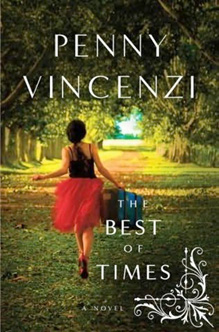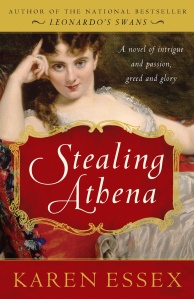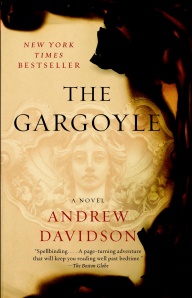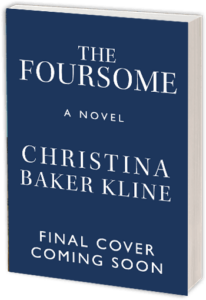Karen Essex talks about how she reclaimed — and reframed — the vampire myth by exploring its female origins in her new novel, Dracula in Love:
 From the first time I read Bram Stoker’s Dracula in my teens, I just knew that Mina was not satisfied with her role as the quintessential Victorian virgin. Little did I dream that many years later, I would actually revise the story, retelling it from Mina’s perspective.
From the first time I read Bram Stoker’s Dracula in my teens, I just knew that Mina was not satisfied with her role as the quintessential Victorian virgin. Little did I dream that many years later, I would actually revise the story, retelling it from Mina’s perspective.
Though Stoker’s Dracula was a brilliant creation and a haunting story, when it came to the women, he wrote like a man of his time, constructing the typical paradigm of bad girl (Lucy Westenra, who succumbs to the vampire’s seduction) versus the good girl (Mina Harker, who does not). The vampire’s kiss was a thinly veiled metaphor for—you guessed it—sex. In the pre-feminist construct, the bad girl is punished; the good girl rewarded.
My ambition for Dracula in Love was to turn the original story inside out. I wanted to give Mina and Lucy rich, full lives, as well as plausible inner lives that made sense in the era in which they lived, but also reflected the breadth of women’s desires. I researched late Victorian art, culture, costume, design, sexual and social mores, religious beliefs, and laws concerning the rights, or lack thereof, of women. I moved to London so that I could haunt its streets and its museums, breathing in the atmosphere as I wrote. Walking in the footsteps of the characters is a crucial part of my process, so I also traveled to southern Austria and the west coast of Ireland, where I set Mina’s birthplace.
Those who have read Dracula know that a good portion of the book takes place in an insane asylum. This is also true of Dracula in Love, but I wanted to recreate the asylum as it would have been in the late Victorian era—not inhabited by an insect-eating vampire slave like Stoker’s Renfield, but full of women, committed for having what we today would consider normal sexual attitudes and desires. Because these asylum scenes are crucial to both the plot and the themes of my book, I scoured the archives of late 19th century insane asylums. I also studied the Victorian fascination with the metaphysical.
In the process of my research, I unearthed a wealth of information that became a major theme: vampires have a long history dating back to pre-biblical times, and many of the blood drinkers of myth were female, symbolic of feminine magic and power.
Digging deeper into world mythologies, I became fascinated by these bloodsucking goddesses and monsters. These are the bad girls of mythology—the fearsome Indian goddess Kali who punished and possessed her enemies by drinking their blood; the vengeful, child-eating, blood-drinking Lamia of Greece and North Africa; Lilith, Adam’s Mesopotamian wife who drank blood in vengeance; and the blood-lusting warrior fairy queens of Ireland.
So if the original blood-drinkers were females, then why was Stoker’s Dracula male? For one thing, mythological stories rarely follow a straight line. Myths are reinvented in every culture, adapted to the needs and beliefs of the people and the times. Through the millennia, concepts of vampires shape-shifted. They were thought to be spirits of women who had been witches; angry plague victims risen from the dead; victims of crime come back to suck the blood of the perpetrators; and succubi who visited men in the night, draining them of their life force (the male spirits who did similar harm to slumbering females are known as incubi).
But power, supernatural or otherwise, was the last thing the Victorians wanted women to possess. In the Victorian mind, women were pure and innocent creatures who must remain protected, shielded from worldly life. To accommodate this mentality, writers like Bram Stoker turned the predatory vampire into a male, giving him preternatural powers, while women became his victims.
Suddenly it was the male vampire roaming the foggy, narrow streets of London threatening lovely young ladies. With Dracula in Love, it was my joy and privilege to give Mina deep hidden desires and a paranormal past of her own to discover and embrace. The good girl has some very “bad” moments for which she is not punished. The old paradigms turn upside down, returning the women to that place of power lost somewhere in the centuries since Lilith and the Lamia roamed the earth, taking their bloody revenge and causing men to quake with fear – and quiver with excitement.
Karen Essex is the author of Kleopatra, Pharaoh, Stealing Athena, and the international bestseller Leonardo’s Swans, which won Italy’s prestigious 2007 Premio Roma for foreign fiction. She graduated from Tulane University, attended graduate school at Vanderbilt, and received an MFA from Goddard College. An award-winning journalist and a screenwriter, she lives in London and Los Angeles.

 When I lived in London last summer I was lucky enough to get to know the novelist
When I lived in London last summer I was lucky enough to get to know the novelist  AD: How are you so unbelievably prolific? [Karen’s new novel is due in November.] Stealing Athena was only two years after the book that came before it, is that correct? Seriously I am in awe. How did you get another book out of your body so quickly?
AD: How are you so unbelievably prolific? [Karen’s new novel is due in November.] Stealing Athena was only two years after the book that came before it, is that correct? Seriously I am in awe. How did you get another book out of your body so quickly? KE: Right. Well, The Gargoyle was your first novel. Correct?
KE: Right. Well, The Gargoyle was your first novel. Correct?